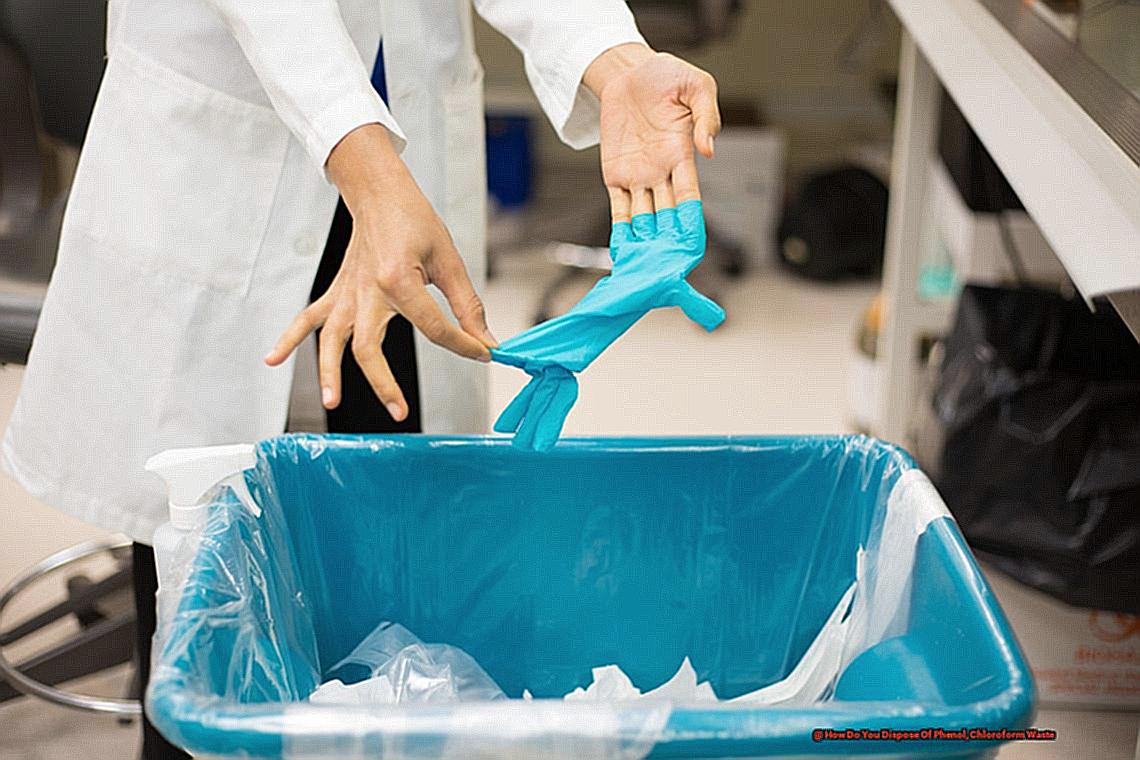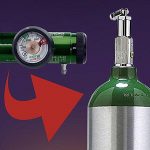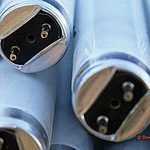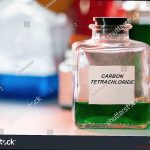Welcome to our blog post on disposing of phenol and chloroform waste.
These chemicals may have their uses, but when it comes to their waste, we need to tread carefully. Improper disposal not only harms the environment, but also puts human health at risk.
So let’s take a closer look at the dos and don’ts of handling these hazardous substances. Grab a cup of coffee and join us as we explore the world of phenol and chloroform waste disposal.
Together, we can make a difference in protecting our planet and ourselves.
How Do You Dispose Of Phenol, Chloroform Waste?
Contents
- 1 How Do You Dispose Of Phenol, Chloroform Waste?
- 2 Government Regulations on Disposal Methods
- 3 Incineration: A Common Method of Disposing of Phenol and Chloroform Waste
- 4 Chemical Treatment as an Alternative Disposal Method
- 5 Landfill Disposal: The Last Resort for Phenol and Chloroform Waste
- 6 Importance of Proper Labeling and Storage for Safe Disposal
- 7 Trained Personnel and Personal Protective Equipment for Safe Handling
- 8 Conclusion
Phenol and chloroform are commonly used chemicals in various industries, but what many people don’t realize is that they can pose a threat to human health and the environment if not disposed of properly. In this blog post, we will explore the importance of safely disposing of phenol and chloroform waste and the potential consequences of improper disposal.
The Hazards of Improper Disposal:
Improper disposal of phenol and chloroform waste can have serious consequences. These chemicals can contaminate water sources, causing harm to aquatic life and potentially affecting the drinking water supply. They can also contribute to air pollution when incinerated without proper control measures. Additionally, exposure to these chemicals can cause health issues for individuals, including respiratory problems and skin irritation.
Methods of Disposal:
There are several methods for disposing of phenol and chloroform waste, including incineration, chemical treatment, landfill disposal, recycling, and professional disposal services. However, it’s important to note that not all methods are suitable for every situation. For example, incineration may release harmful pollutants into the air if not properly controlled, and landfill disposal should only be used as a last resort due to the potential for soil and groundwater contamination.
Regulations and Guidelines:
Disposing of hazardous waste is heavily regulated by government agencies such as the EPA and OSHA. These regulations are in place to protect the environment and public health. Companies must obtain proper permits and follow specific procedures for disposal. Employers also have a responsibility to provide training for employees on proper handling and disposal procedures.
Best Practices for Disposal:
In addition to following regulations, there are some best practices that should be followed when disposing of phenol and chloroform waste. This includes segregating hazardous waste from other types of waste, properly labeling containers, storing waste in designated areas, wearing personal protective equipment, and having an emergency response plan in place.
Government Regulations on Disposal Methods

Proper disposal of hazardous waste, such as phenol and chloroform, is crucial for protecting both human health and the environment. To ensure safe and responsible disposal, government agencies like the Environmental Protection Agency (EPA) and Occupational Safety and Health Administration (OSHA) have set regulations in place. In this section, we will delve into these regulations and explore the best ways to dispose of these chemicals in accordance with government guidelines.
Identification, Labeling, and Storage
The EPA requires that all hazardous waste, including phenol and chloroform waste, be properly identified, labeled, and stored before disposal. This is to ensure that the waste can be handled and disposed of safely. Hazardous waste must be stored in appropriate containers that are leak-proof and clearly labeled with the type of waste and any potential hazards.
Approved Disposal Facilities
In addition to proper identification, labeling, and storage, the EPA also requires that hazardous waste be disposed of at approved facilities. These facilities have been permitted by the agency and have specific protocols in place for handling and disposing of hazardous waste. Disposing of hazardous waste at unapproved facilities can result in serious consequences, both legally and environmentally.
OSHA Regulations
In addition to EPA regulations, OSHA also has guidelines for handling and disposing of hazardous waste in the workplace. These regulations include proper training for employees who handle hazardous waste and protocols for safely disposing of it. It is important for companies to ensure that their employees are trained in handling hazardous waste to prevent any mishandling or accidents.
Local Regulations
It is important to note that some states may have additional regulations or restrictions on the disposal of hazardous waste. It is crucial to check with local authorities to ensure compliance with all applicable regulations.
Consequences of Non-Compliance
Failure to comply with government regulations for disposing of hazardous waste can result in hefty fines and penalties. Not only that, but improper disposal can also cause harm to human health and the environment. It is crucial to follow these regulations to prevent any negative consequences.
Incineration: A Common Method of Disposing of Phenol and Chloroform Waste
When it comes to disposing of hazardous waste, there is no room for error. Proper disposal not only protects our health and well-being but also plays a crucial role in preserving the environment. Among the various methods of disposing of hazardous waste, incineration stands out as one of the most effective ways to handle chemicals like phenol and chloroform.
Incineration involves burning waste at high temperatures to break down complex molecules and render them harmless. This method is highly effective in destroying hazardous waste, making it a popular choice for substances like phenol and chloroform. However, it is essential to take proper precautions during the incineration process to prevent the release of toxic byproducts into the air.
One of the biggest advantages of incineration is its ability to completely destroy hazardous chemicals. The high temperatures used in the process can break down complex molecules, leaving behind non-hazardous ash and gases. This ensures that these chemicals do not end up polluting our water or soil.
But incineration is not a simple process. It requires specialized equipment and trained personnel to ensure that it is done safely and effectively. Incineration facilities must adhere to strict regulations and have proper permits to dispose of hazardous waste properly.
So how does incineration work for phenol and chloroform waste? First, the waste is transported to a licensed facility where it is carefully unloaded and placed into large furnaces or chambers. These furnaces can reach temperatures between 1000-1200 degrees Celsius, ensuring complete combustion of the waste.
After incineration, the resulting ash must be cooled, collected, and tested to ensure that it is no longer hazardous. Only then can it be disposed of in a landfill. This thorough process ensures that no harmful substances are left behind.
It is crucial to note that incineration facilities must also monitor their emissions to prevent any harmful byproducts from being released into the environment. This strict monitoring ensures that the incineration process does not contribute to any pollution.
Chemical Treatment as an Alternative Disposal Method
Disposing of hazardous waste is a crucial issue that requires careful consideration and proper handling to protect the environment. One method that has been gaining popularity in recent years is chemical treatment, which utilizes chemical reactions to neutralize or break down the harmful components of the waste. In this blog post, we will explore why chemical treatment is a safe and effective alternative to traditional disposal methods, specifically for hazardous waste like phenol and chloroform.
Firstly, chemical treatment offers more control over the treatment process compared to other methods such as incineration or landfilling. By using various chemical reactions, such as oxidation, reduction, and hydrolysis, the hazardous components of the waste can be broken down into less harmful substances. This allows for a more tailored approach to treating different types of hazardous waste, ensuring that the most appropriate method is used for each specific case.
Moreover, chemical treatment can often be done on-site, eliminating the need for transportation and reducing associated risks. This not only saves on costs but also minimizes potential accidents during transport. Additionally, by treating the waste on-site, there is better monitoring and control over the process, ensuring that all safety measures are followed.
One advantage of chemical treatment is its versatility. It can be used for small quantities of hazardous waste as well as larger volumes. This makes it a suitable option for industries that generate varying amounts of waste on a regular basis. Additionally, adjustments can be made to factors such as pH levels and temperature to accelerate the reactions and make them more effective.
However, it is important to note that chemical treatment does have its limitations. It may not be suitable for highly concentrated or large volumes of waste. Proper training and expertise are also required to handle the chemicals involved safely. Furthermore, there may be limitations on the types of waste that can be treated effectively.
Landfill Disposal: The Last Resort for Phenol and Chloroform Waste
Landfill disposal is often the last resort for disposing of hazardous waste such as phenol and chloroform. These chemicals are highly toxic and can have detrimental effects on the environment if not properly handled. If you find yourself in a situation where landfill disposal is necessary, here is what you need to know.
First and foremost, it is crucial to understand the risks and regulations involved in landfill disposal. While landfills are designed to contain waste and prevent it from reaching the environment, there is always a possibility of contamination. This is why obtaining a permit from the EPA or your state’s environmental agency is necessary before disposing of hazardous waste in a landfill.
When it comes to phenol and chloroform waste, they must be contained in leak-proof containers and clearly labeled as hazardous. Landfills have specific areas designated for hazardous waste disposal, which are lined with protective materials to prevent leakage into the soil or groundwater. However, some landfills may also require additional treatment of the waste before disposal, such as solidification or incineration.
It is important to note that not all landfills accept hazardous waste, so it is crucial to contact your local landfill beforehand. Once the waste has been disposed of, it will continue to pose a potential threat to the environment for many years. This is why it should only be considered as a last resort option for disposal.
The Environmental Protection Agency recommends reducing the production of hazardous waste through proper storage, labeling, and handling procedures. This can significantly decrease the need for landfill disposal of phenol and chloroform waste. Additionally, some landfills may have restrictions on the amount of hazardous waste they can accept at one time, so it is important to follow these guidelines to prevent overloading.
Proper documentation and tracking of the disposal process are also essential in ensuring compliance with environmental laws. This information can also be used for future reference.
Importance of Proper Labeling and Storage for Safe Disposal
Proper labeling and storage of hazardous waste may seem like a tedious task, but it is a crucial step in ensuring safe disposal. Whether you are a homeowner, business owner, or waste management professional, following the correct labeling and storage guidelines can prevent harm to both individuals and the environment.
When it comes to hazardous waste, two common substances that may come to mind are phenol and chloroform. These chemicals are often found in household items like cleaning products, pesticides, and even cosmetics. However, when disposed of improperly, they can pose serious health risks and damage to the environment.
One of the first steps in proper disposal is labeling. Containers holding hazardous waste should be clearly labeled with the chemical name, its hazards, and any necessary precautions for handling and disposal. This not only helps prevent confusion during disposal but also provides important information for those handling the waste.
Moreover, using designated storage containers is crucial in preventing accidents and spills. Sealed drums or plastic containers specifically designed for hazardous materials should be used to store these substances. It is also important to keep them in a designated area away from other chemicals and materials to avoid any cross-contamination.
Regularly inspecting storage areas is another essential aspect of safe disposal. Any signs of damage or leaks should be addressed immediately to prevent potential hazards. This also aids in the identification and categorization of hazardous waste, making it easier for disposal companies to handle them safely.
Trained Personnel and Personal Protective Equipment for Safe Handling
These chemicals can pose serious health risks to both humans and the environment if not handled and disposed of properly. That’s why trained personnel and personal protective equipment (PPE) are essential in ensuring safe handling and disposal.
First and foremost, trained personnel are crucial in handling these chemicals. They should receive proper training on the potential hazards and risks associated with phenol and chloroform waste, as well as the correct procedures for disposal. This knowledge not only protects themselves but also those around them. Without proper training, individuals may not be aware of the potential dangers or the necessary precautions to take.
In addition to training, proper use of PPE is necessary when handling phenol and chloroform waste. This includes gloves, goggles, aprons, and respirators. PPE serves as a barrier between the chemical and the handler, protecting against exposure. However, it is important for trained personnel to regularly check their PPE for any damage or wear and replace it as needed.
Proper labeling and storage of hazardous waste are also crucial in preventing accidents and contamination. Just like building a fortress, we must label containers clearly and use designated storage areas to prevent confusion and cross-contamination. Trained personnel should also regularly inspect storage areas for any signs of damage or leaks to ensure the safety of everyone involved.
But why is all of this so important? Aside from protecting ourselves and others, proper handling and disposal of phenol and chloroform waste also prevent environmental contamination. These chemicals can have long-term effects on the environment if not handled responsibly. By following proper protocols, we can minimize the risk of spills or leaks that could harm our planet.
Conclusion
In conclusion, the disposal of phenol and chloroform waste is a crucial responsibility that should not be taken lightly. The potential harm to the environment and human health cannot be ignored, which is why it is essential to handle these hazardous substances with care and follow proper disposal methods.
Throughout our blog post, we have delved into the dos and don’ts of handling these chemicals, emphasizing the importance of adhering to government regulations, utilizing appropriate disposal techniques such as incineration or chemical treatment, and ensuring trained personnel and personal protective equipment are used.
It is vital to understand that reckless disposal can have severe consequences, ranging from contamination of water sources to endangering individuals. As responsible citizens, it is our duty to handle these chemicals with caution. By following best practices for disposal, we can make a positive impact in safeguarding our planet and ourselves.
Let us continue educating ourselves on proper waste management techniques and spreading awareness about the significance of responsible disposal. Together, we can pave the way for a cleaner and healthier environment for future generations.





